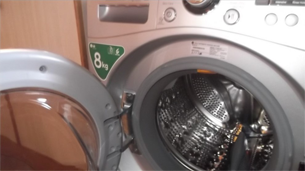How Does your Washing Machine Work?

Have you ever wondered what is inside your washing machine that actually makes it clean your clothes? Your washing machine has probably cleaned your clothes hundreds of times for you without you knowing how. You just put the clothes inside along with a softener and cleaner, turn it on and just walk away from it to wait for it to finish.
Get Started
Before you actually attempt to wash your clothes there are a few decisions you need to make. There are numerous settings that you can select to ensure that your clothes are washed properly without any disasters occurring such as them changing shape or size and having coloured dyes running throughout the load. Modern washing machines are much easier to operate than the ones of old. You need to select the correct temperature for the clothes to be washed and also the correct washing cycle for them. For example if you are washing woollen items the temperature is usually displayed on the label of the garment which needs to be adhered to and a washing cycle that is compatible with wool. A suitable detergent and/of softener needs to be added to the wash box. Now that you have the basics done you can start the wash.
First Step
The door will automatically lock and will not open until the washing cycle is complete or you press the stop button. You will hear water will enter the washing machine which is usually coming from a hose that also feeds the cold tap on your sink. This enters via a solenoid valve at the back of the machine behind the panels. Most modern washings have only one solenoid for cold water entry while many older machines can be plumbed for hot water and cold water. The water travels through the soap box where it picks up the detergent before travelling in to the drum. There is also a level switch in place that will deactivate the water inlet solenoid when the required level is reached.
Second Step
The water is then heated. There is a heating element within the drum of the washing machine which is used to heat the water. The element will continue to heat the water until the temperature reaches the setting that you selected earlier before starting the cycle. This temperature is controlled by a thermostat which will turn on and off the element as required.
Third Step
When the correct temperature has been reached the drum will then start to turn in one direction. If you observe your washing machine when it is in cycle you notice that at times the drum will stop and then start turning in the opposite direction. The speed of rotation and the duration may also vary. The rotation of the drum is achieved by the use of a drive motor and belt system. This again is controlled by the cycle you selected earlier.
Fourth Step
At this point in the cycle the clothes should be washed sufficiently. The water now needs to be removed from the drum. There is a small extract pump located under the drum which is used for removing the water from the washing machine. This will pump the water out and in to a pipe which leads to a drain at the back of the washing machine.
Fifth Step
The majority of the water has now been removed from the drum of your washing machine but your clothes will still be very wet. The washing machine will now go in to a spinning cycle which will rotate the drum very fast which will displace most of the remaining water. Again the pump will remove the excess water.
Last Step
At this point the washing machine will be satisfied that the selected cycle is complete and it will now allow you to open the door. Your clothes should be washed as you intended.
If, for any reason, your washing machine does not clean your clothes as efficiently as you have expected or the cycle does not finish you may need to contact your local domestic appliance repair specialist. Complete Services Ireland (CSI) are the expert washing machine repair company that services Wicklow, Dublin and Wexford.



 -
- 